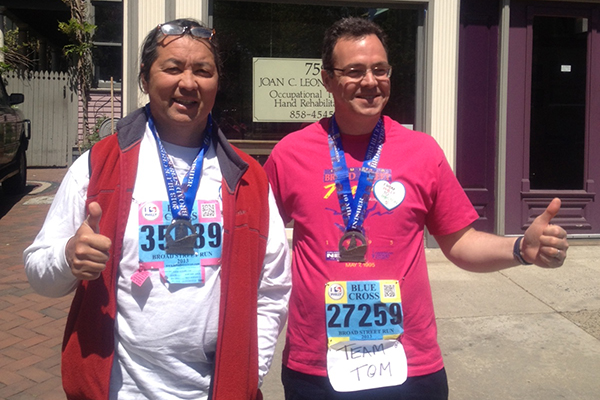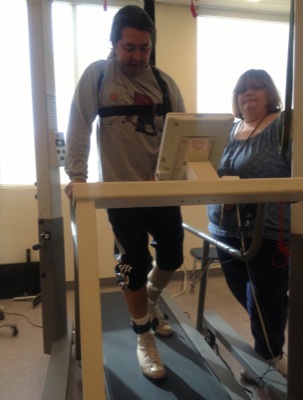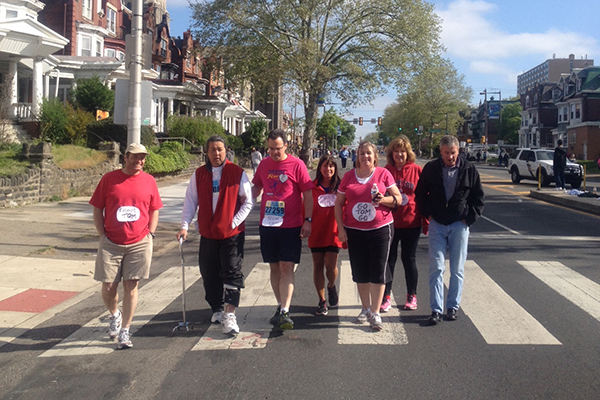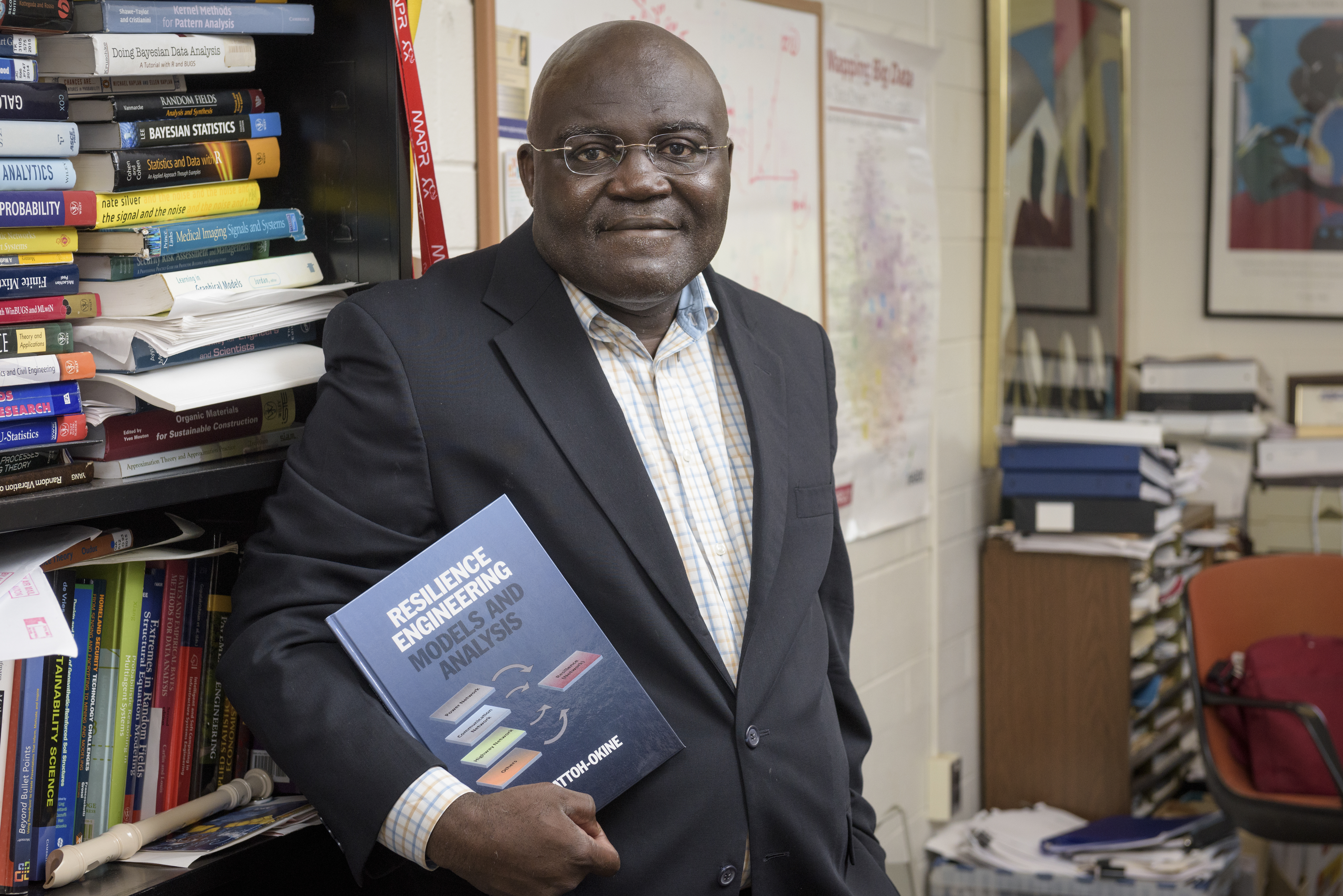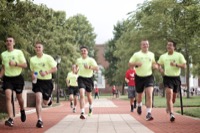Back to Broad Street
Stroke patient benefits from novel physical therapy intervention
11:40 a.m., June 12, 2013--By the time Tom Leonard crossed the finish line at the Broad Street Run in Philadelphia in May, the event organizers had packed up and left. But Leonard’s wife, Joan, managed to track down a staff member with a box of finisher medals and snag one for him.
The 56-year-old athlete already had dozens of medals from Broad Street and other long-distance races, but this one was special.
People Stories
'Resilience Engineering'
Reviresco June run
A stroke in February 2012 had brought Leonard’s athletic lifestyle to a screeching halt.
“Last year was the first year that I had to sit out Broad Street,” he says. “It was a very sad day for me, and I knew that the only way to banish that sadness was to do the race this year.”
Leonard had lots of help getting to the start and finish lines in 2013, including the FastFES research project in the Department of Physical Therapy at the University of Delaware.
Funded by the National Institutes of Health, FastFES is evaluating the effect of treadmill training on daily function and quality of life in people who have experienced a stroke.
As a subject in the study, Leonard received a treatment of fast treadmill walking combined with functional electrical stimulation three times a week for 12 weeks at Magee Riverfront, which allows UD to train subjects post stroke in their intervention studies.
Research physical therapist Margie Roos, who worked with Leonard throughout the period, reports that he now walks around his home without a cane and is weaning his use of the cane when walking outside.
“I’m not surprised by his remarkable achievements,” she says. “He was very active prior to his stroke and continues to be active in his community. He rides a recumbent bike with family and friends whenever the weather permits. He’s very motivated to remain active and include exercise in his daily life.”
Tamara Wright, another physical therapist working on the study, notes that Leonard’s family was extremely supportive and always present for his evaluations in the study. “His wife is an occupational therapist so she was fully aware of the importance of continued rehabilitation and practice needed to improve after a stroke,” Wright says.
Still, neither Roos nor Wright thought Leonard could complete the 10-mile Broad Street event, as he had never walked that distance since the stroke.
But with their encouragement and the support of his wife and “Team Tom” — a group of friends who joined forces to back him in his attempt at the distance — Leonard crossed the finish line six hours after starting the race.
“I’m not surprised that he was able to walk in the race,” Wright says. “He was motivated, dedicated and demonstrated great potential to improve his walking abilities. Maybe next year he can run part of it.”
Leonard is grateful for the treatment he received in the study. “The stroke really laid me low,” he says. “But with the help of Margie and Tami, I’m discovering that there is life after stroke.”
About the FastFES Project
The FastFES project is studying the effect of treadmill training on daily function and quality of life in people with hemiparesis after stroke. Currently, people who have had a stroke are randomly placed in one of three treadmill training groups. While on the treadmill, the first group walks at a comfortable pace, the second group walks at a faster pace, and the third group walks at a faster pace with electrical stimulation to ankle muscles. The researchers are interested in seeing which group shows the greatest improvements in walking patterns and walking speed and in reducing the energy cost of over-ground walking.
Stuart Binder-Macleod, Edward L. Ratledge Professor and department chair, is director of the project, and Darcy Reisman, assistant professor, is co-director.
The study is funded by NIH grant NR010786.
Article by Diane Kukich






